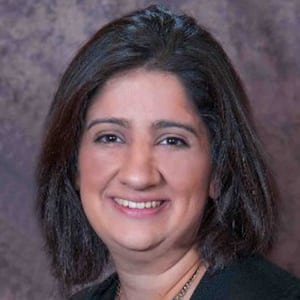Customers are at the center of everything Gap Inc. is doing today as it works to turn around its organization and be a leading omnichannel retailer, a digital executive told attendees at eTail West.
Last fall, Gap Inc. CEO Art Peck announced that 200 Gap and Banana Republic stores would close in malls, with both brands experiencing quarter after quarter of declining sales, and the company would concentrate on expanding its Old Navy and Athleta units.
“You have to have core beliefs, and they have to be the key to what you’re doing,” said Noam Paransky, Senior Vice President of Digital for Gap Inc. “You have to rally your organization around those beliefs.”
Paransky said one core belief is that brands still matter, adding digital professionals need to amplify brand power to gain success. He also added that stores aren’t going away; the customer still votes with her wallet and a vast majority of retail transactions there.
“Customers want a seamless experience because ultimately this is all about customers, whatever, whenever,” said Paransky. “What I think is clear is that as an industry we have to radically improve the omnichannel customer experience.”
Paransky said his other belief is that customers, associates and partners all want more from retailers. More than just a transaction, they want to work and shop and interact with companies in tune with their needs.
He said Gap Inc. is revamping its analytics, looking at clickstream data and surfacing explicit behaviors to identify and deliver on customer wants and needs.
“We have to test those hypotheses around consumer insights and predictive models to get to the heart of some of those hypotheses,” said Paransky. “We have to test and learn to validate those hypotheses, adjust them and continuously iterate. There is no set formula for figuring out what the customer needs.”
As an organization, retailers should aspire to long customer relationships and value, not merely transactions. “Our analysis found that a customer who shops across our family of brands and across channels within one year is worth ten times more than a one-and-done customer,” he said.
In 2012, Paransky said, Gap Inc. took a “global brands” approach with the intent of amplifying the independence of each brand so that they could create distinct identities and grow faster.
“The byproduct of that organizational change was, we didn’t have an enterprise leader of digital in a similar way to what we did before, so our center of excellence slowly atrophied,” he said.
In 2017 Gap adopted a hybrid approach, creating a balance between the needs of the brands while leveraging the center of excellence. “We’re able to create and make decisions across our enterprise by reconstituting the center of excellence and our scale,” Paransky said.
This gave Gap a single view of how to design experiences, expand capabilities and make investment decisions.
“We are a highly matrixed organization,” said Paransky. “Our guiding principle is that brands have their independence supported by the center of excellence.”
Paransky said Gap’s “beating heart” is its business operations center it calls “mission control,” where an interdisciplinary team has 14 big screens running real-time clickstream analytics. “It’s where we bring teams in to have ad hoc conversations about performance to ensure the clarity of the mission,” he said.
He said Gap is working with partners to invest in best-of-breed capabilities.
“We built out our personalization stack and we’re looking to engage in more relevant ways,” Paransky said. “It’s about omnichannel, we’re an omnichannel retailer. We have to unlock those customer needs and deliver experiences against them across our thousands of stores and web properties to solve customer pain points.”

